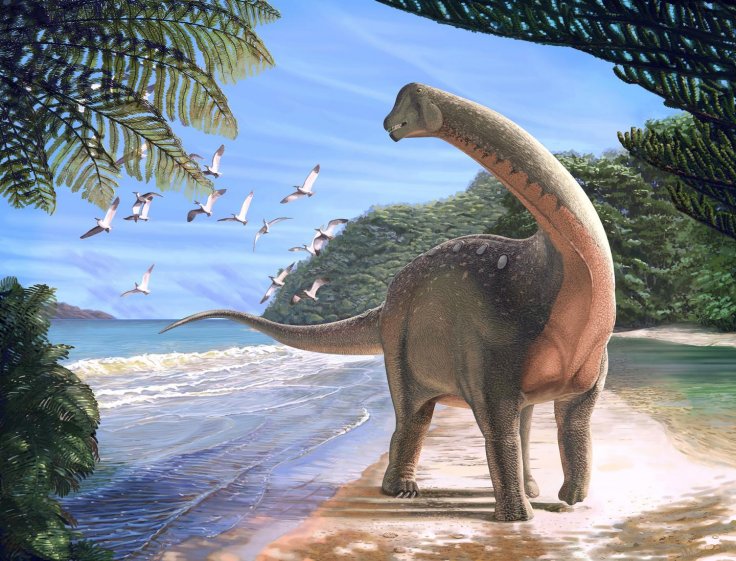
Dinosaurs were once the most dominant land creatures on earth, and just like humans, they too migrated from one continent to another, claims a new study. The new concept of dinosaur traveling was unraveled when scientists at the Mansoura University unearthed a near-perfect fossil of a titanosaurian dinosaur from the upper Cretaceous era in Egypt's western desert.
Dinosaurs moved from one continent to another?
Experts revealed that titanosaurian dinosaurs were more common in Europe and Asia than in Africa. According to scientists, this new discovery indicates that dinosaurs might have moved between Africa and Europe towards the end of their reign.
The well-preserved remains of the dinosaur indicate that these herbivorous creatures were of the size of a school bus. According to experts, this discovery is very significant for paleontologists as it may shed light on the last days of dinosaurs in Africa, which until now remains a mystery.
"The discovery and extraction of mansourasaurus was such an amazing experience for the MUVP team. It was thrilling for my students to uncover bone after bone, as each new element we recovered helped to reveal who this giant dinosaur was," said Hesham Sallam, lead author of the study, reports Natureasia.
Extrapolating the findings, experts say that the new discovery assures that the dinosaurs in Africa were not completely isolated as believed or proposed in the past, but always held connectivity with Europe even during the end days for dinosaurs.
Scientists stunned with the new discovery
This newly discovered species dubbed as mansourasaurus shahinae is a herbivore dinosaur, and it is supposed to have roamed across the Egyptian deserts around 94 to 66 million years ago. The study report published on Nature Ecology & Evolution reveals that mansourasaurus is the sixth and youngest dinosaur ever to be discovered in Egypt. According to experts, titanosaurian dinosaurs are the largest land animals ever known to science.
"When I first saw pics of the fossil, my jaw hit the floor. This was the Holy Grail — a well-preserved dinosaur from the end of the age of dinosaurs in Africa — that we paleontologists had been searching for for a long, long time," said Matt Lamanna, of the Carnegie Museum of Natural History, a co-author of the study.
Lamanna also added that this new discovery was the culmination of a search that occupied half of his life.
A research team at the University of Ohio who analyzed this new discovery revealed that Mansourasaurus shahinae had a very long neck and bony plates embedded on its skin. This species was about 33 feets long, and it weighed just the same as an elephant.
The new study report came just days after researchers at the Ludwig-Maximilian University of Munich discovered a 150-million-year feathered dinosaur in northern Bavaria.
According to experts, this is the oldest fossiled bird ever discovered, and this creature falls in a type of Archaeopteryx, a winged animal with dinosaur traits. It also has sharp teeth and a long tail. Interestingly, this new feathered creature represents a major turning point in evolution, as it has both the characteristics of a theropod dinosaur and a modern bird.








